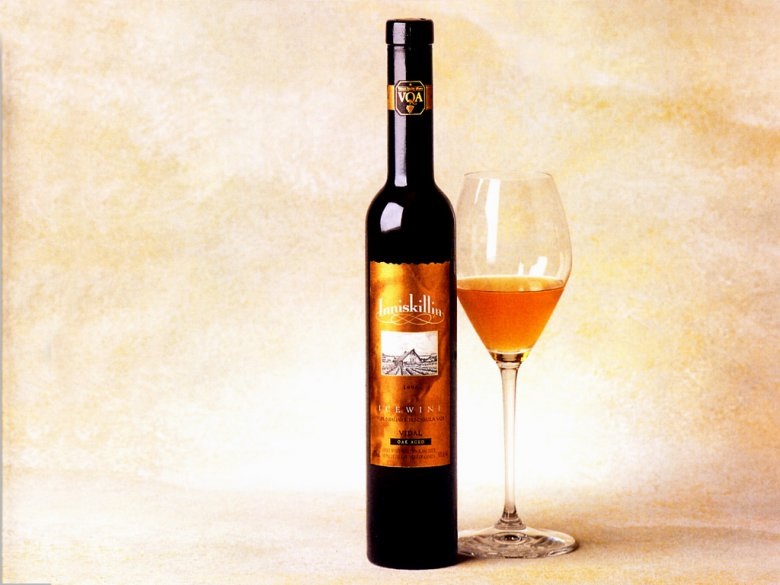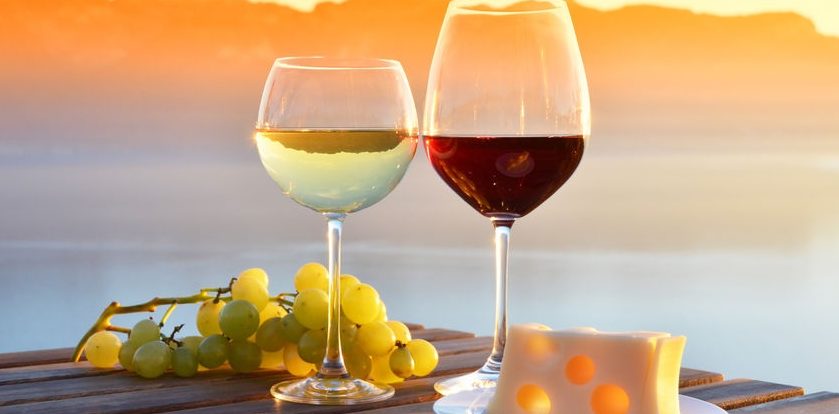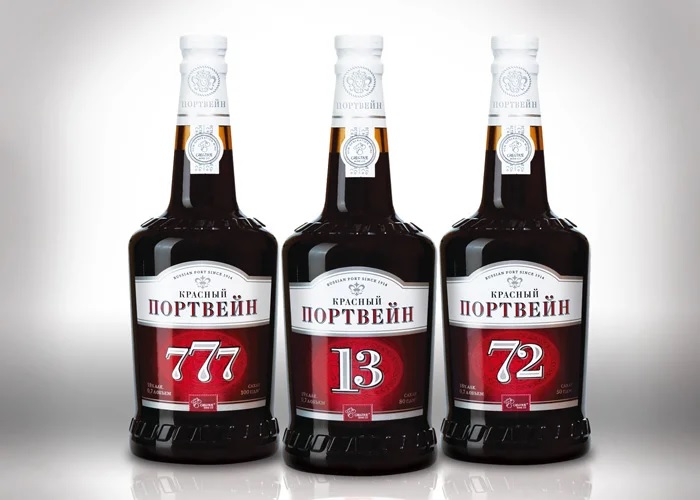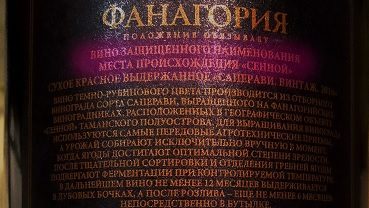The Soviet Union included republics famous for centuries of winemaking experience. On the shelves of shops one could find inexpensive and high-quality Georgian, Moldavian, Ukrainian, Armenian drinks. They decorated festive tables, gave people joy and health, if their use did not turn into a bad habit. But the unexpected happened. First, an anti-alcohol campaign fell upon the country, then perestroika turned the fraternal republics into the near abroad. Not a trace remains of the rich choice of Soviet times. The Moldavian "Feteasca", "Gratieshty", "Rose de Masé" have disappeared. Georgian "Kindzmarauli" and "Khvanchkara" soared in price so that a rare buyer can afford them. Massandra Sherries and Madera do not lag behind them in price. However, time is running out. In the Don Valley, in the Kuban, Taman and Crimea, new vines have already grown, giving abundant yields of local varieties, along with imported Merlot and Chardonnay. The editorial staff of the site "bestx.htgetrid.com/en/" offers an overview of "The Best Wines of Russia for 2020", compiled according to the opinion of wine critics and buyers.
Content
- 1 Winemaking history
- 2 What wines are there
- 3 Which wine to choose
- 4 Top manufacturers
- 5 Rating of quality wines made in Russia
- 5.1 10. Crimean Riviera Inkerman
- 5.2 9. Merlot Vintage red semi-sweet, company "Yubileinaya"
- 5.3 8. Citron Tsyurupinsky Select
- 5.4 7. Sunny Valley red semi-sweet
- 5.5 6. Inkerman Merlot Cabernet
- 5.6 5. Kokur of the Sun Valley
- 5.7 4. Estate of the Perovskys Cabernet Sauvignon
- 5.8 3. Cru Lermont Chardonnay Fanagoria
- 5.9 2. Bakkal Su Saperavi, Cabernet Sauvignon, Bastardo
- 5.10 1. Alma Valley Chardonnay
Winemaking history
Humanity has been familiar with this gift of the gods for over 6,000 years. As in those distant times, wine is obtained from the fermentation of grape juice. Sometimes, in order to prevent the product from turning into vinegar, it is “fortified” with the addition of alcohol and is called fortified.
The first of the Russian tsars who became interested in this matter was Mikhail Fedorovich, the founder of the Romanov dynasty.

By his decree in 1613, the first special garden was arranged in the Astrakhan monastery. Apparently, things were not going well there, and in 1640 the gardener Yakov Botman was discharged from abroad. Already 16 years later, wine from Astrakhan was served on the table to another tsar, Alexei Mikhailovich.

The industrial scope of this craft in the Don lands was given by the son of Tsar Alexei Mikhailovich - Emperor Peter I. Having won the Azov from the Turks, he took up winemaking, having determined the village of Razorskaya as a place for new plantings.
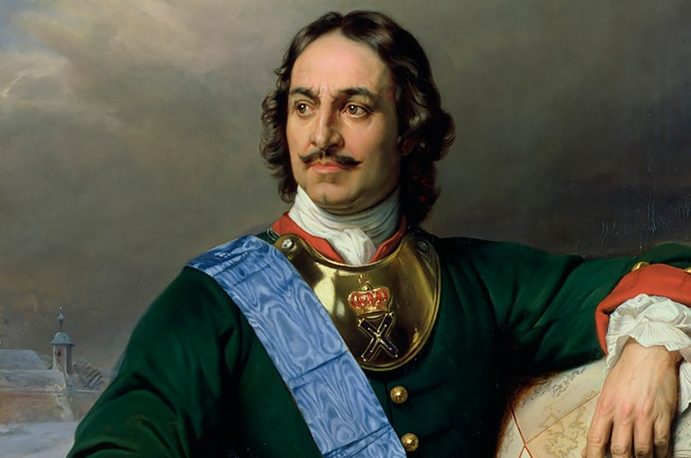
Since then, this type of agricultural activity in the Russian Empire has grown steadily. The maximum wine production in Russia was 2,226,509 liters or 181,017 buckets. World production at that time was 968 million buckets. Russia's share in it was negligible.
During the years of Soviet power, this type of agricultural production continued to develop. New plantations were laid, large enterprises were organized.
Interesting! Soviet champagne, which is still indispensable for any New Year's table, was developed and produced at Abrau-Dyurso already in 1928.
Then came the war, victory, the struggle against devastation, the restoration of the national economy. Over the 40 post-war years, new plantations have been restored and planted. The assortment and quantity of products delighted the buyers. Many samples were exported. And then a new blow - the decree on the fight against drunkenness and alcoholism, adopted on 25.05.1985. Planting went under the ax, the factories were redesigned for the production of juices.
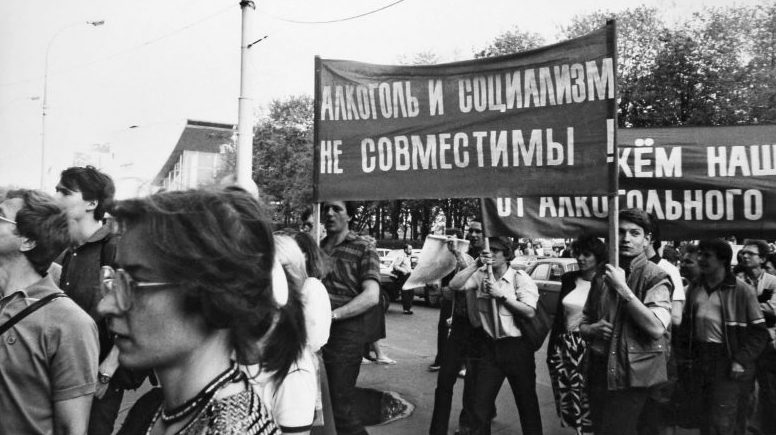
The collapse of the USSR almost finished off Russian production. Experts have determined that from 1992 to 2007, the planting area has almost halved, from 107,000 to 55,000 hectares. And yet, the process of restoring what was lost has been launched and is already bearing fruit. According to the World Organization of Wine and Winemaking, already in 2007 Russian companies managed to increase the production of their products to 7280 thousand hectoliters, which allowed our country to take 11th place in the ranking of the largest producers.
What wines are there
By color
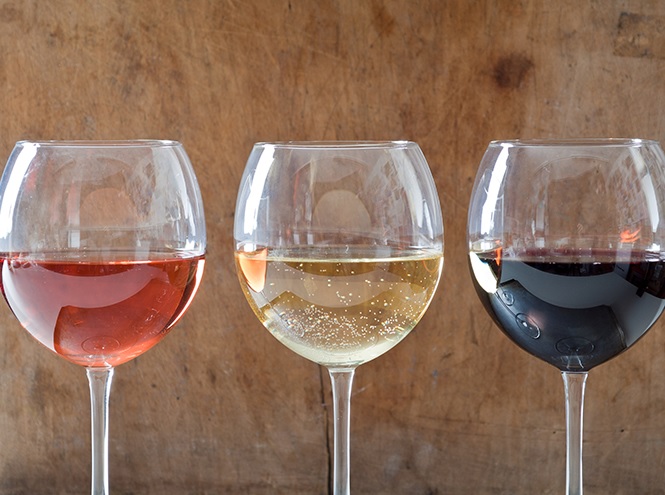
During the preparation process, different grape varieties are used. They can be conditionally divided into two types: black, which are often called red, and white.
Wine is distinguished by color:
- White, light or ripe straw color, darkening over time.
- Red and pink, from dark ruby to dark garnet. Over time, the wine brightens due to the precipitation of dyes.
- Orange. A rare variety of white wines with an amber color. It is obtained by aging the wort together with the pulp (skin and seeds of berries).
By shutter speed
Natural aging of the finished product is called aging. This process is quite complicated, and not every drink gets better with age. According to the aging period, the "potion" is divided into:
- young or new, not yet fermented;
- aged after the end of fermentation in large containers for at least six months before bottling;
- branded canteen, aged in tanks for at least one and a half years;
- branded strong and dessert, aged in tanks for at least two years;
- collection - vintage, aged after bottling for another three years or more.
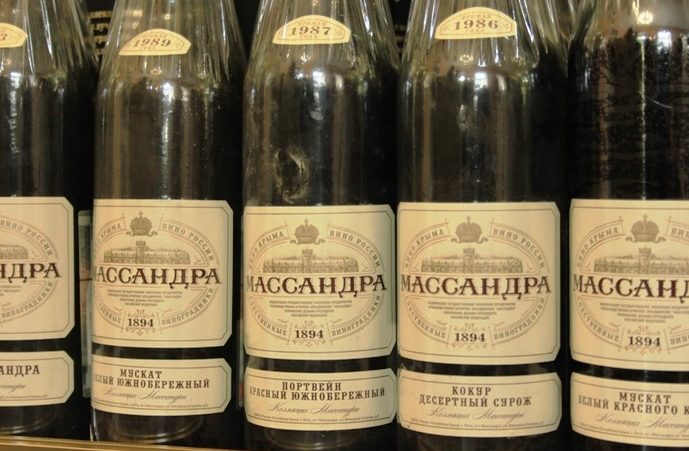
Interesting! The aging period is counted from January 1 of the year following the harvest.
Alcohol and sugar content
Russian standards distinguish between table (natural), fortified, flavored and sparkling wines.
Canteens
These include natural products: dry, semi-dry and semi-sweet. Differ in alcohol and sugar content:
- dry wines are called wines where the wort is completely fermented and the sugar remains no more than 0.3% or 4 g / l. Alcohol content from 8.5 to 15%;
- in semi-dry, the amount of alcohol is the same, sugar is from 4 to 18 g / l;
- in semisweet alcohol remains in the same amount, the amount of sugar increases in the range from 18 to 45 g / l.
Fortified
Depending on the alcohol content, there are:
- strong, with alcohol content from 17 to 21%, sugar - from 30 to 120 g / l;
- sweet - with alcohol from 14 to 20% and sugar up to 150 g / l;
- semi-dessert, with alcohol from 14 to 16% and sugar in the range from 50 to 120 g / l;
- wines with an alcohol content of 15 to 17% and sugar from 160 to 200 g / l are considered dessert;
- liqueur products include products with alcohol from 12 to 16% and sugar from 210 to 300 g / l.
Flavored
Wine with complex characteristics, infused with herbs, with an alcohol content of 18%, sugar - from 6 to 16 g / l. Vermouths, popular all over the world, belong to this type. Most often they are used for making cocktails. Red sweet vermouths were the first to be made in Italy, dry whites - in France.

Sparkling
Saturated with carbon dioxide as a result of secondary fermentation. You don't have to go far for an example - Champagne. Here it is a synonym for all sparkling drinks, but according to the WTO rules, this name is assigned to wine from the French region of Champagne. Sparkling flavors can be white, red like Italian Brachetto, and pink.
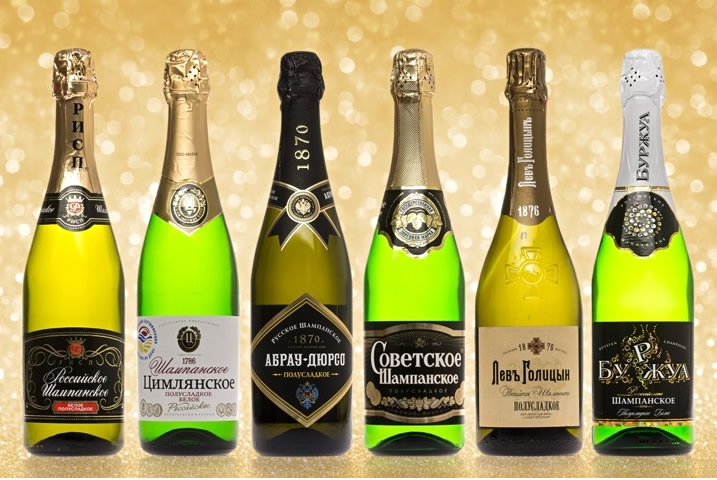
Interesting! Not to be confused with sparkling sparkling, artificially saturated with carbon dioxide.
The gas pressure in a bottle of sparkling wine reaches 6 atm. Drinks with pressure up to 3 atm. called effervescent.
A drink not saturated with carbon dioxide (not sparkling) is called quiet.
Differences by grape variety
Depending on the material from which the drink is prepared, wine is distinguished:
- single-varietal, made from grapes of a certain variety, with the harvest year indicated on the label;
- sepazhnoe, prepared from different varieties of berries;
-
blended, made from several types of wine obtained from different varieties of berries.
Non-alcoholic
Natural product from which ethanol is almost completely removed. This can be done in several ways:
- Heat it to over 80 ° C. Under these conditions, ethanol almost completely evaporates.
- Using reverse osmosis. The liquid is passed through a special membrane with the smallest pores. The same method is used to extract salt from seawater in desalination plants, or for deep purification of industrial water from various salts.
- Heating up to 25 ° C under pressure in an autoclave.
Manufacturers offer this product to adherents of a healthy lifestyle, assure athletes that they can use this product without harming the training process. It is proven that even pregnant women and drivers can use it. As for the last statement, it is not entirely true. Ethanol cannot be removed completely. So the risk of losing your driver's license after drinking two glasses of non-alcoholic "potion" is the same as after drinking a bottle of kefir. The breathalyzer will definitely show the presence of ppm.
All other statements are also controversial. But the most important thing is that the product will remain without its wonderful aroma, which manifests itself only in the presence of ethanol, a volatile compound that gives natural wine a unique aroma during evaporation.
Which wine to choose
This is not an easy task. The main selection criteria are indicated on the label. Specialists of Roskachestvo have developed recommendations explaining how to correctly read this "passport" of a drink, determine the quality of the product, what to look for and what PGI and ZNMP are.
Information on the label
This document has a front and a back side (back label) containing, in addition to the name, a comprehensive description of the composition, properties, taste and aroma, information about the manufacturer. The information is strictly regulated by current legislation. The manufacturer is obliged to comply with all the requirements of the law, otherwise his products are considered counterfeit, with all the consequences arising from this definition.
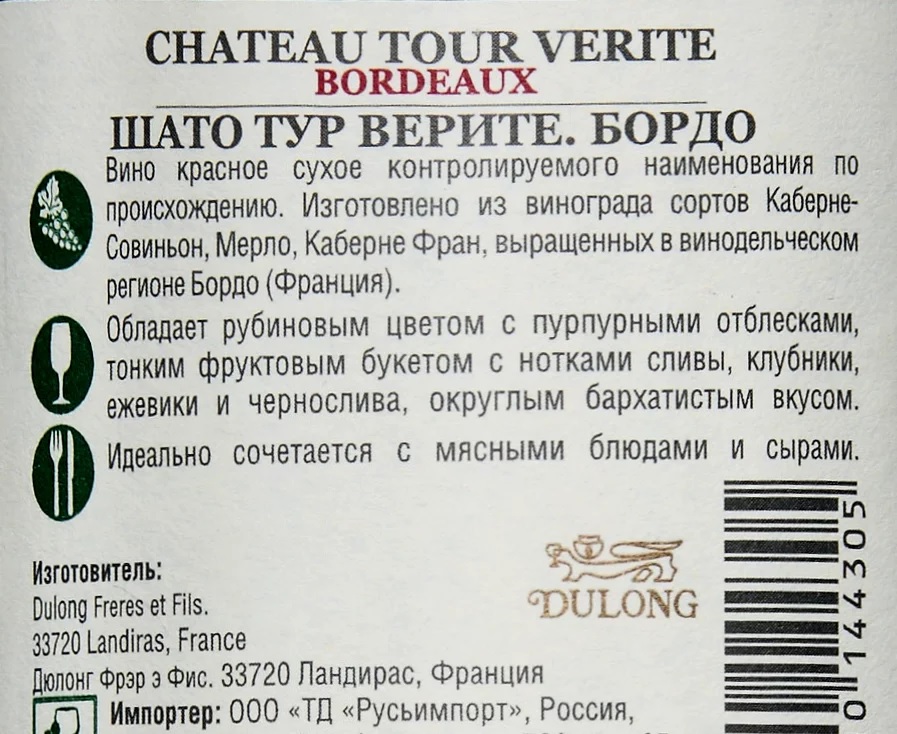
Geographic wine
The highest quality products are considered products with a Protected Geographical Indication and Protected Designation of Location, (hereinafter PGI and ZNMP). There are no abbreviations on the counter-labels. These concepts are written down verbatim. Explaining the full meaning of these marks is long and difficult. Let's dwell on the main aspects that are important for the consumer:
- The PGI mark means that 85% of natural material grown in the specified region (PGI Crimea, Kuban, etc.) was used in the production of wine. The rest 25% - from other regions, incl. imported.
- ZNMP - the same, but without foreign additives. 100% natural product from the region indicated on the label.
The requirements for the quality of such drinks are increased. This is the best that can be found on domestic counters.
How much and where to buy
Each manufacturer develops its own retail network. So if you are interested in a specific sample, you should contact the company stores. In addition, most companies work with the largest retail chains:
- Magnet;
- Tape;
- Alphabet of taste;
- Tabris;
- Fragrant World.
The latter network has an online catalog of alcoholic beverages, where you can make a choice and order wine online, just like in any online store.
Do not think that a very expensive product will be of the highest quality. Having paid 2000 rubles for a bottle, you can get serious disappointment instead of pleasure. Guided by the price should be in the range from 400 to 1000 rubles.It doesn't hurt to get acquainted with the research results of the Russian wine guide, where a list of the best domestic wines is published annually.
Top manufacturers
Inkerman plant
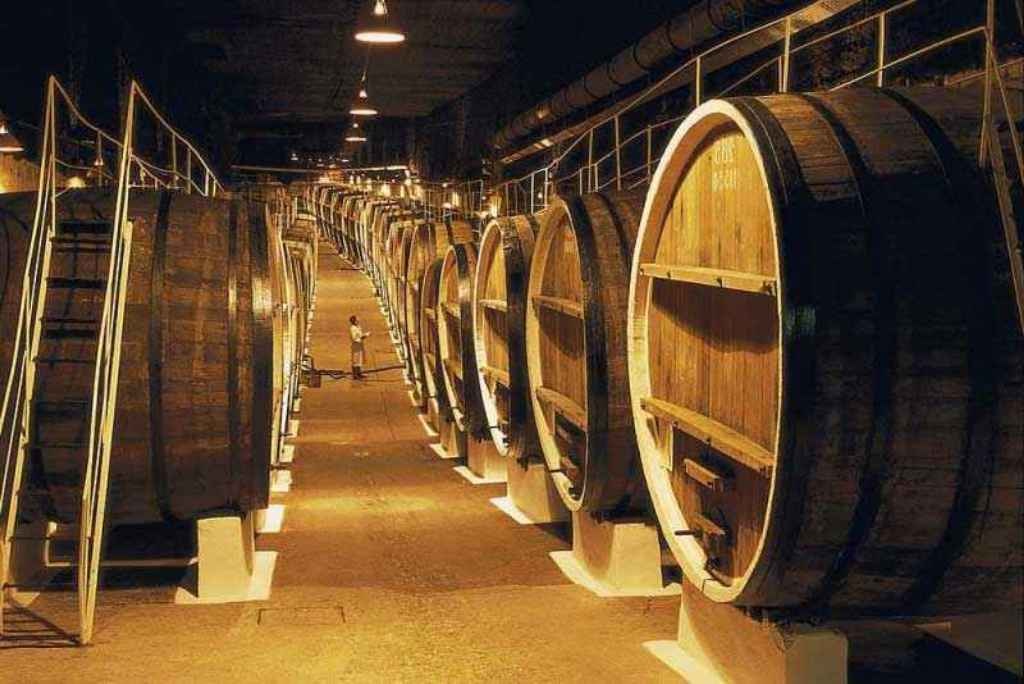
One of the oldest and perhaps the largest enterprises in Crimea. Founded in 1961 in Inkerman. Old mine workings with an area of 55,000 m2 are used as storage facilities, in which a constant temperature not exceeding 15 C and humidity are maintained. For aging, oak barrels are used. The assortment of the enterprise includes 38 brands of wine products: dry, semi-dry and semi-sweet, strong and dessert, budget and expensive. The company's drinks have repeatedly won prizes at international exhibitions and competitions, receive the most positive characteristics of foreign specialists.
Anniversary
One of the oldest companies in Taman. Has been working since 1966. The company owns 2500 hectares of plantations.

In 2016, the enterprise was reconstructed. The modern equipment was purchased from the Italian company Della Toffola. The products are constantly presented at international exhibitions and have won hundreds of awards of various values.
Sunny Valley
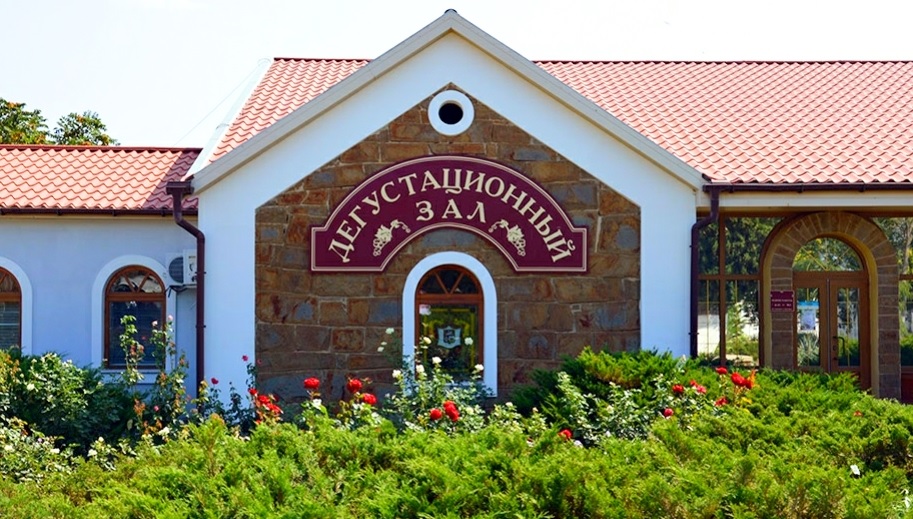
The enterprise was founded in 1888 by Prince Golitsyn on the estate of Prince Gorchakov “Arhaderesse”. Today it is a modern enterprise with 400 hectares of its own plantings, two factories with Italian equipment. The wine is aged in oak barrels from Russia and France. The company's products are constantly winning medals and diplomas at international exhibitions. The company was one of the first to receive the right to use the protected geographical name "Crimea" for its products.
The Perovsky estate
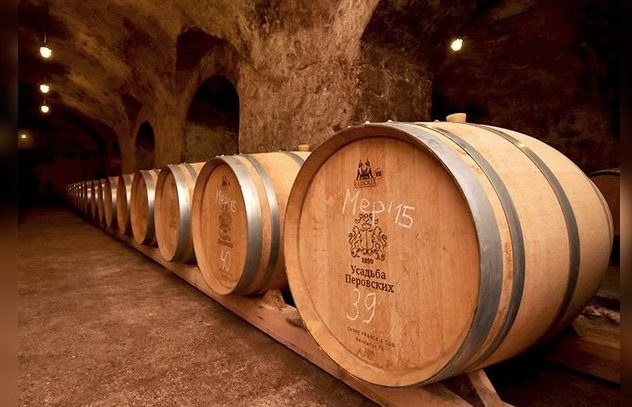
An enterprise as part of the Wein und Wasser company, organized in 2009 on the basis of the Sofia Perovskaya state farm in the village of Lyubimovka, near Sevastopol. The enterprise has undergone a large-scale modernization, including the restoration of the cellars of 1890 and the installation of modern equipment.
OJSC Agroindustrial firm "Fanagoria"
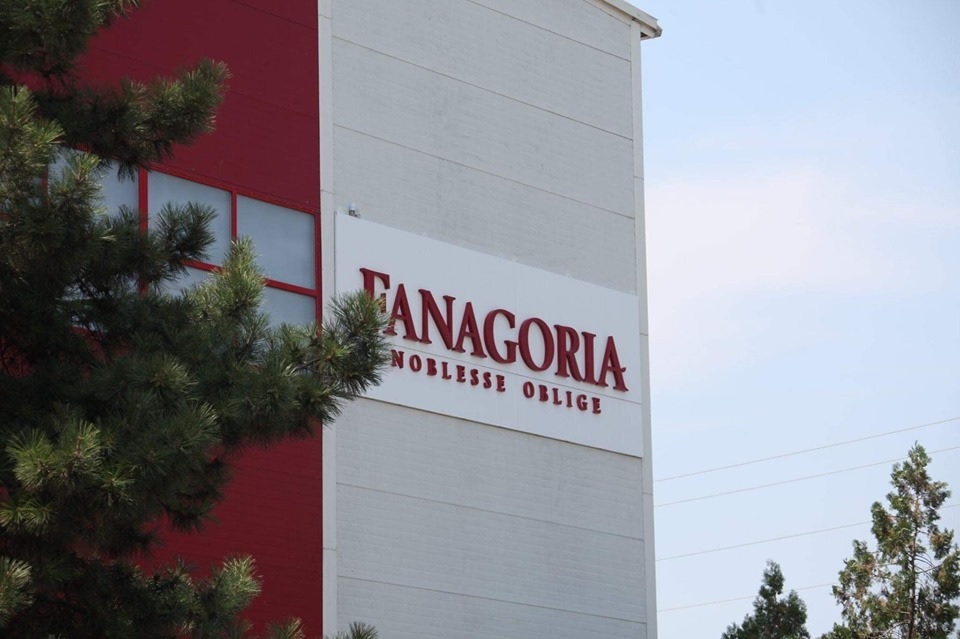
Another oldest representative of Taman. In 1963, the largest plant in Europe began to operate here, the products of which received the status of official drinks of the Olympics - 80 and the world youth forum in 1985. The company received its present name in 1996. In the period from 2006 to 2012, the enterprise is seriously modernized. The planting area of its vines increases to 2300 hectares. Today Fanagoria produces champagne and cognacs, dry vintage wines, produces oak barrels for aging wine and cognac. The company's products have repeatedly won prizes and diplomas at international exhibitions in Vienna, Burgundy, London and Russia.
House of the Zakharyins
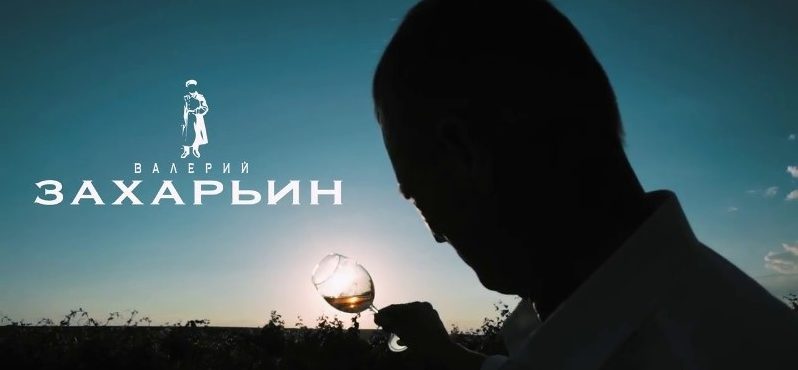
The company has existed for over 15 years. Currently, this farm grows autochthonous (indigenous local) Crimean and European varieties, is one of the leading suppliers to the domestic market of elite samples, including brands:
- "House of the Zakharyins";
- Alma Hil's;
- Bakkal Su;
- "Omega Bay";
- "Good year".
In the spring of 2019, the company became the owner of the Inkerman plant.
Alma velly
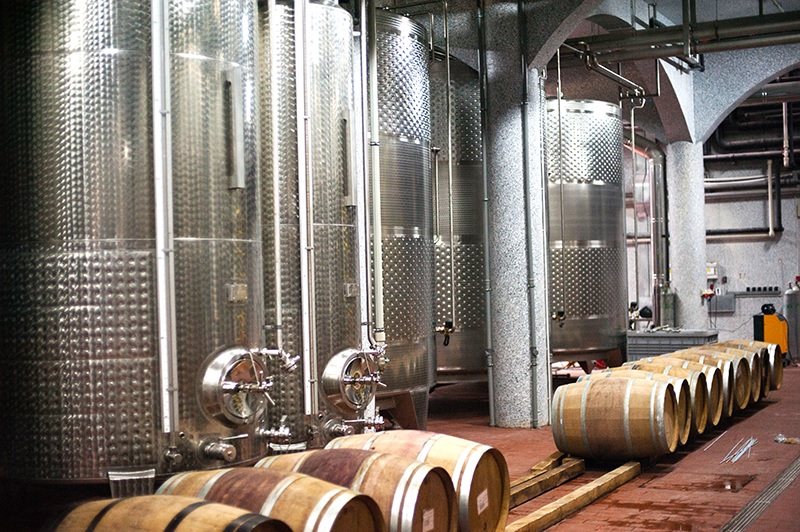
A young company with a full production cycle in the Alma river valley, Bakhchisaray region of Crimea. Designed by Swiss architects in high-tech style. The production uses gravity technology, which is characterized by the minimum use of mechanical impact on materials, including pumping the wort and the finished product. The company laid its own plantings in 2008. The first product comes from the 2013 harvest.
This is not a complete list of wineries. It can be continued for a very long time.
Rating of quality wines made in Russia
10. Crimean Riviera Inkerman

Semi-sweet red from the Inkerman plant. Three western varieties are used for its preparation:
- Merlot, bred in France, is not inferior in popularity to Cabernet Sauvignon;
- Saperavi, bred in Georgia;
- Cabernet Sauvignon.
The color is red, saturated. The drink is easy to drink, slightly blackberry. Brand design bottle with brand name embossed on the bottom.Quite a budget product goes well with fruits, cheese, barbecue. Vacationers in Crimea can recommend it as a drink for every day.
Advantages:
- the alcohol content does not exceed 13%;
- natural;
- affordable price.
Disadvantages:
- not identified.
| Name | Crimean Riviera |
|---|---|
| A type | Red semi-sweet |
| Varieties | Cabernet Sauvignon, Saperavi, Merlot |
| Volume | 0.75 |
| Alcohol | 9-13% |
| Colour | Dark ruby |
| Taste | Pleasant, with blackberry tones |
| Manufacturer | Inkerman, Sevastopol |
| average price | 250 rubles |
9. Merlot Vintage red semi-sweet, company "Yubileinaya"
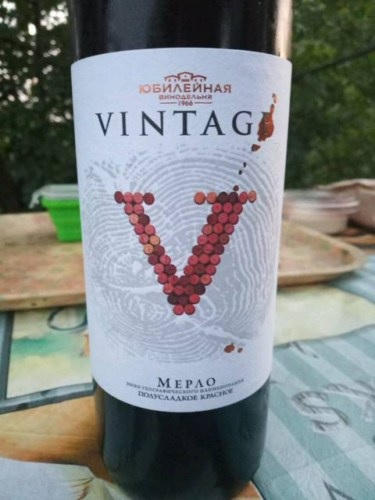
A drink with a protected geographical indication “Kuban. Taman Peninsula ". It is made only from Merlot, ripening in Taman. According to federal law No 409, it is bottled only in glassware and contains at least 85% natural materials. The use of concentrated juice is prohibited. The color is red transparent burgundy. Acidity and sweetness are balanced, fruity and spicy notes are felt. The average price is 270 rubles.
Advantages:
- transparent color;
- clean taste and aroma;
- affordable price.
Disadvantages:
- not identified.
| Name | Merlot "Vintage" |
|---|---|
| A type | Semi-sweet, red |
| Varieties | Merlot |
| Volume | 0.75 l |
| Alcohol | 0.15 |
| Colour | Intense red, transparent |
| Taste | Balanced sweet and sour with fruity and spicy notes |
| Manufacturer | Company "Jubilee" Russia, Krasnodar Territory |
| average price | 270 rubles |
8. Citron Tsyurupinsky Select

Hybrid variety Citron Tsyurupinsky bred at Nizhnedneprovskaya NIISOPiVP. It is grown on the lands of the farm. White dry, with a pronounced taste of lime, hints of tropical fruits, has a light straw color, served with fruits and seafood, especially oysters. On a hot summer day, the drink would go great without a snack. The alcohol content does not exceed 13%.
The corks with which the bottles are sealed are very interesting. Cork bark products familiar to us can be infected with cortical disease, which is difficult to determine by instrumental methods, and almost impossible - by eye. This woody disease can ruin the wonderful drink. Scientists have developed innovative Nomocoroc corks, made of synthetic materials that do not prevent air from entering the bottle. The average price is low, only 280 rubles.
Advantages:
- citrus and fruity aromas;
- color - light straw;
- innovative cork;
- affordable price.
Disadvantages:
- exclusive product, rarely on sale.
| Name | Citron Tsyurupinsky Select |
|---|---|
| A type | White dry |
| Varieties | Citron Tsyurupinsky |
| Volume | 0.75 l |
| Alcohol | 0.13 |
| Colour | Light straw |
| Taste | Slightly sour. The main aromas are citrons, fruits. |
| Manufacturer | Jubilee company |
| average cost | 280 rubles |
7. Sunny Valley red semi-sweet

A light drink from the oldest Crimean farm. Made from three varieties:
- Bastardo, bred in France. In Crimea, Bastardo Magarach is grown, obtained by crossing Bastardo and Saperavi;
- Cabernet - Sauvignon, the oldest variety bred in France;
- Odessa Black (Aliberne), bred by Ukrainian breeders.
A transparent drink with a rich dark red color. It has a natural, slightly tart taste and aroma. The acidity and sweetness are balanced. Served with meat dishes. According to buyers, the product has an excellent value for money.
Advantages:
- balance of acidity and sweetness;
- natural aroma;
- affordable price.
Disadvantages:
- not identified.
| Name | Sunny Valley |
|---|---|
| A type | Red semi-sweet table |
| Varieties | Bastardo, Cabernet Sauvignon, Odessa black |
| Volume | 0.75 l |
| Alcohol | 0.12 |
| Colour | Rich ruby |
| Taste | Harmonious sweetness, bright fruit and berry aromas |
| Manufacturer | JSC "Solnechnaya Dolina" Crimea |
| average price | 331 rubles |
6. Inkerman Merlot Cabernet
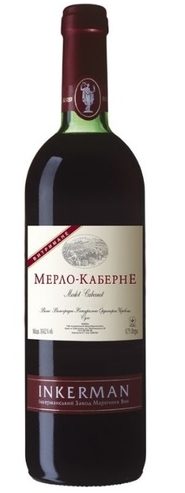
Product of the Inkerman plant. For its preparation, European varieties were used:
- Merlot;
- Cabernet Sauvignon.
For more than a year, the products were kept in oak containers. The drink is ruby color, soft velvety taste, complex aroma. Served with spicy cheeses, game, lamb, duck.
Advantages:
- beautiful colour;
- pleasant aroma;
- affordable price.
Disadvantages:
- not identified.
| Name | Merlot Cabernet Classic Collection |
|---|---|
| A type | Dry red table |
| Varieties | Cabernet Sauvignon, Merlot |
| Volume | 0.75 l |
| Alcohol | 11-13% |
| Colour | Ruby |
| Taste | Nice tart, velvety. |
| Manufacturer | Inkerman plant |
| average cost | 356 rubles |
5. Kokur of the Sun Valley
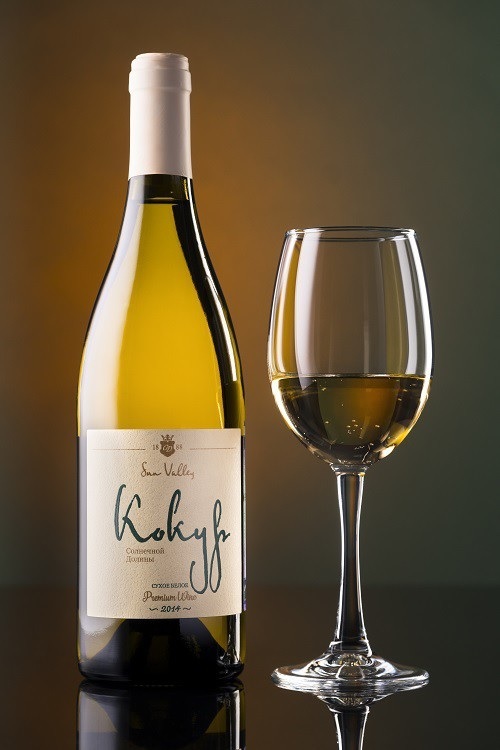
Dry white PGI "Crimea". According to Roskachestvo, it is recognized as one of the best dry white wines in Russia. The alcohol content does not exceed 13%, sugar - no more than 4g / dm3. Light straw color. The taste is harmonious, without sourness, with a barely noticeable sweetness, does not taste bitter. Served with seafood, summer salads, sushi, rolls. Gets the best reviews from buyers.
Advantages:
- 100% natural product;
- easy to drink;
- harmonious taste.
Disadvantages:
- rarely found on sale outside Crimea.
| Name | Sun Valley Kokur |
|---|---|
| A type | Dry white |
| Varieties | White Kokur |
| Volume | 0,75l |
| Alcohol | 0.13 |
| Colour | Light straw |
| Taste | Filled, slightly sweet |
| Manufacturer | JSC "Solnechnaya Dolina" |
| average price | 450 rubles |
4. Manor Perovskih Cabernet Sauvignon
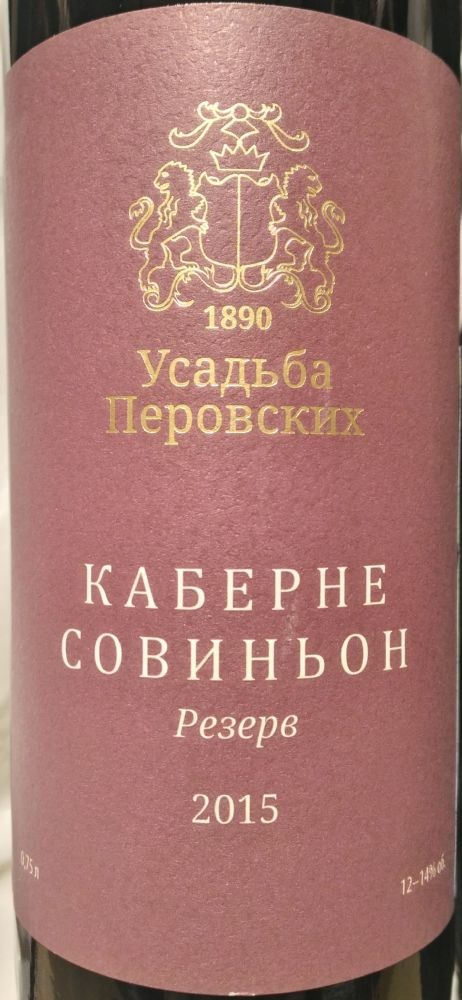
Dry Cabernet Sauvignon with a spicy, slightly blackberry aroma. Black currant is felt in a long aftertaste. The drink is served with stewed beef, grilled pork. Average price: 546 rubles.
Advantages:
- currant aftertaste;
- saturated color;
- blackberry flavor.
Disadvantages:
- high price.
| Name | The Perovsky estate |
|---|---|
| A type | Dry red |
| Varieties | Cabernet Sauvignon |
| Volume | 0.75 l |
| Alcohol | 12-14% |
| Colour | Intense dark red |
| Taste | Rich in chocolate, vanilla, cinnamon. |
| Manufacturer | Wein und Wasser, Russia |
| average cost | 546 rubles |
3. Cru Lermont Chardonnay Fanagoria
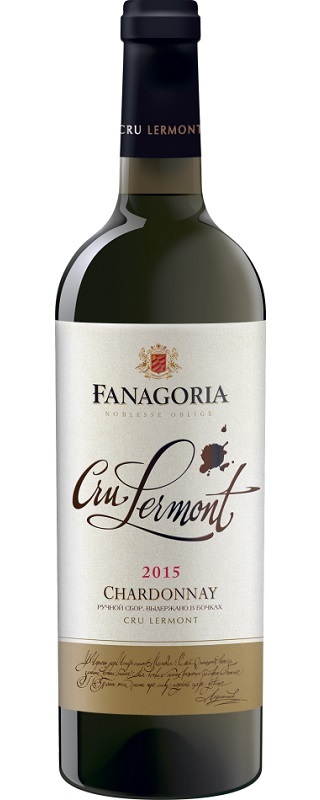
JSC APF Fanagoria has released its collection "Cru Lermont" dedicated to M.Yu. Lermontov, who visited the Phanagoria fortress on his way to Taman. Our review presents a white wine made from hand-picked Chardonnay berries grown on Phanagoria plantations. Golden Drink with a fruity vanilla aroma is served with fish, cheese, shellfish. The average cost is 676 rubles.
Advantages:
- golden color;
- fruity aromas;
- long aftertaste.
Disadvantages:
- high price.
| Name | Cru Lermont, dry, white |
|---|---|
| Variety | Chardonnay |
| Volume | 0.75 liters |
| Alcohol | 0.135 |
| Colour | golden straw |
| Taste sensations | Fruit, vanilla, oak aroma |
| Manufacturer | Winery "Fanagoria" |
| average price | 676 rubles |
2. Bakkal Su Saperavi, Cabernet Sauvignon, Bastardo
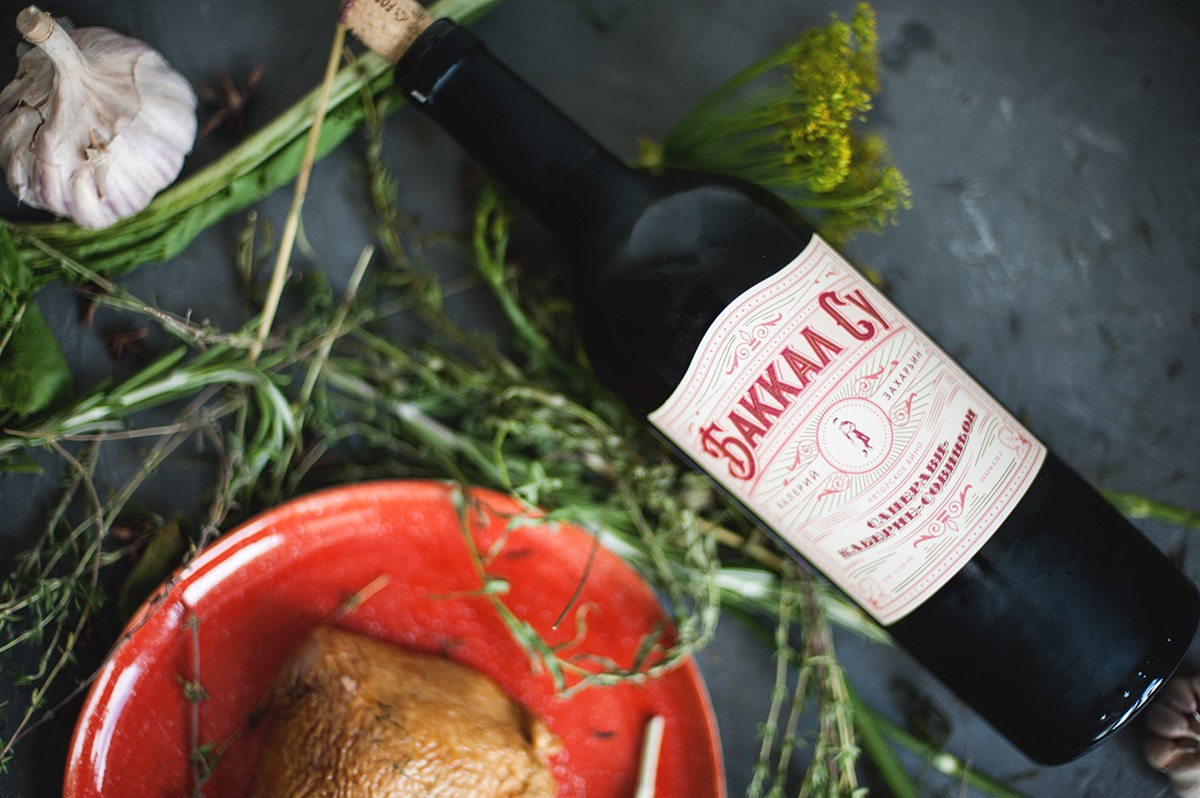
“A glass of water” is the translation from the Turkic name of the drink from the collection of the same name of the company “House of Zakharyins”. A dark ruby drink with a fruity-spicy aroma is served with fried meat, pies. The average cost of a bottle with a capacity of 0.75 liters will be 1100 rubles.
Advantages:
- balanced taste;
- memorable bouquet;
- long aftertaste.
Disadvantages:
- high price;
- rarely found on sale outside Crimea.
| Name | Bakkal Su |
|---|---|
| A type | Red semi-sweet |
| Varieties | Saperavi, Cabernet Sauvignon, Bastardo |
| Volume | 0.75 l |
| Alcohol | 0.11 |
| Colour | Dark ruby |
| Taste | Aroma of dark berries, plums, cherries, black currants |
| Manufacturer | Interfin LLC, Crimea, "Valery Zakharyin" |
| average cost | 1100 rubles |
1. Alma Valley Chardonnay

White dry, the color of ripe straw. Made from Chardonnay grown in the Alma Valley. It has a balanced taste, with aromas of yellow pear, apples, peaches, nut-caramel mixture reminiscent of kozinaki. It is used with salads and pates, soft and young cheese, fish. One of the best products in Russia according to Roskachestvo.
Advantages:
- pleasant balanced taste;
- rich fruity aroma.
Disadvantages:
- high price.
| Name | Alma valley shardonnay |
|---|---|
| A type | Dry, white |
| Varieties | Chardonnay |
| Volume | 0.75 l |
| Alcohol | 0.125 |
| Colour | Ripe straw |
| Taste | Pleasant aroma of ripe pears, apples, peaches, nuts, caramel. |
| Manufacturer | Alma Valley, Crimea |
| average cost | 1199 rubles |
A person should be able to choose the right wine for a festive feast and use it not to harm his health. This drink should bring joy to our lives. For this, winemakers from all over the world have been working on it for centuries.The editors of the site hope that the presented review will answer the questions: where to buy Russian-made wine, which drink and which company is better to buy for a particular table, what to try, and not make mistakes when choosing. We remind you that the products presented in the review may be interesting only for adults.

